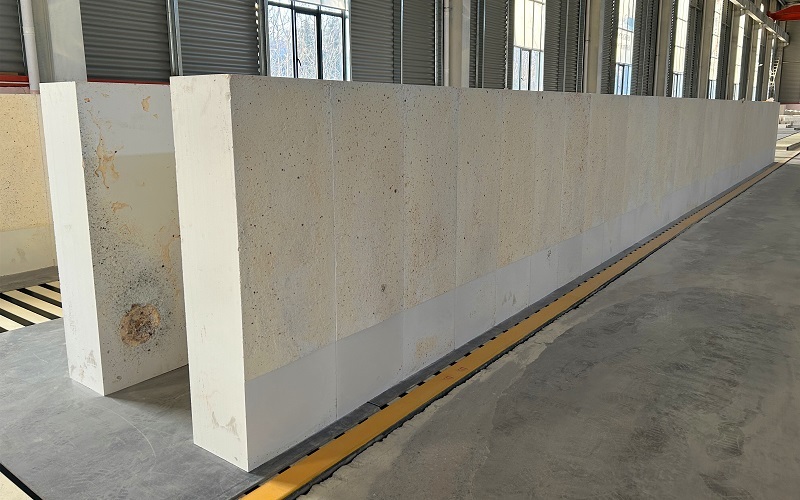AZS bricks for glass kilns
Classification:
Product Introduction
AZS bricks refer to refractory bricks containing zirconia (ZrO₂), alumina (Al₂O₃), and silicon dioxide (SiO₂). Among them, the content of ZrO₂ is high, generally around 33% - 41%, the content of Al₂O₃ is about 45% - 55%, and the content of SiO₂ is about 10% - 17%. This kind of brick makes use of the phase change toughening mechanism of ZrO₂ to improve the thermal shock resistance of the brick, while the alumina ensures the high refractory and good chemical stability of the brick.
AZS brick erosion resistance: the temperature in the glass kiln is very high, and the molten glass has strong corrosiveness. AZS bricks are resistant to the erosion of molten glass, especially the erosion of alkaline glass components. For example, in a furnace where soda-lime glass is melted, alkali metal ions (such as Na⁺) in the molten glass will cause erosion of refractory materials, and AZS bricks can effectively prevent this erosion and prolong the service life of the kiln.
AZS bricks are resistant to high temperature and thermal stability: the working temperature of the glass kiln is usually around 1500 - 1600°C. AZS bricks are able to withstand such a high temperature environment, and during frequent heating and cooling processes, due to their good thermal stability, they will not easily appear damage such as cracking. This is because the presence of ZrO₂ buffers the thermal stress, and when the temperature change causes the volume change, the ZrO₂ undergoes a phase change to absorb the energy and reduce the thermal stress generated inside the brick.
Thermal insulation performance of AZS bricks: To a certain extent, it helps to reduce the heat loss inside the kiln and improve the thermal efficiency of the kiln. Although it is not a specialized thermal insulation material, its structure and composition make it also have a certain thermal insulation effect compared to some other refractories, which helps to maintain the temperature stability in the glass kiln.
| Projects | Physical and chemical indicators | ||||
| AZS33-Y | AZS36-Y | AZS41-Y | |||
| Chemical Composition % | Al2O3 | / | (Margin) | ||
| ZrO2 | / | 32~36 | 35~40 | 40~44 | |
| SiO2 | ≤ | 16 | 14 | 13 | |
| Na2O | ≤ | 1.45 | 1.45 | 1.30 | |
| (Fe2O3+TiO2+CaO+MgO+Na2O+K2O) | ≤ | 2 | 2 | 2 | |
| (Fe2O3+TiO2) | ≤ | 0.3 | 0.3 | 0.3 | |
| Bulk density (g/cm3) | ≥ | 3.75 | 3.80 | 3.95 | |
| Apparent porosity/% | ≤ | 1.5 | 1.0 | 1.0 | |
| Resistance to the erosion rate of molten glass at rest (Ordinary soda-lime glass, 1500°C×36h)/(mm/24h) | ≤ | 1.60 | 1.50 | 1.30 | |
| Initial precipitation temperature of glass phase/°C | ≥ | 1400 | 1400 | 1400 | |
| Bubble precipitation rate (ordinary soda-lime glass, 1300°C×10h)/% | ≤ | 2.0 | 1.5 | 1.0 | |
| Glass phase exudation (1500°C×4h)% | ≤ | 2.0 | 3.0 | 3.0 | |
| Thermal expansion rate (room temperature ~1000°C)/% | ≤ | Provide measured data | |||
| Bulk density(Kg/m3) | PT、QX | > | 3400 | 3450 | 3550 |
| ZWS | > | 3600 | 3700 | 3850 | |
| WS | > | 3700 | 3750 | 3900 | |
Key words:
AZS bricks for glass kilns
AZS bricks
Related Products
Product inquiry


